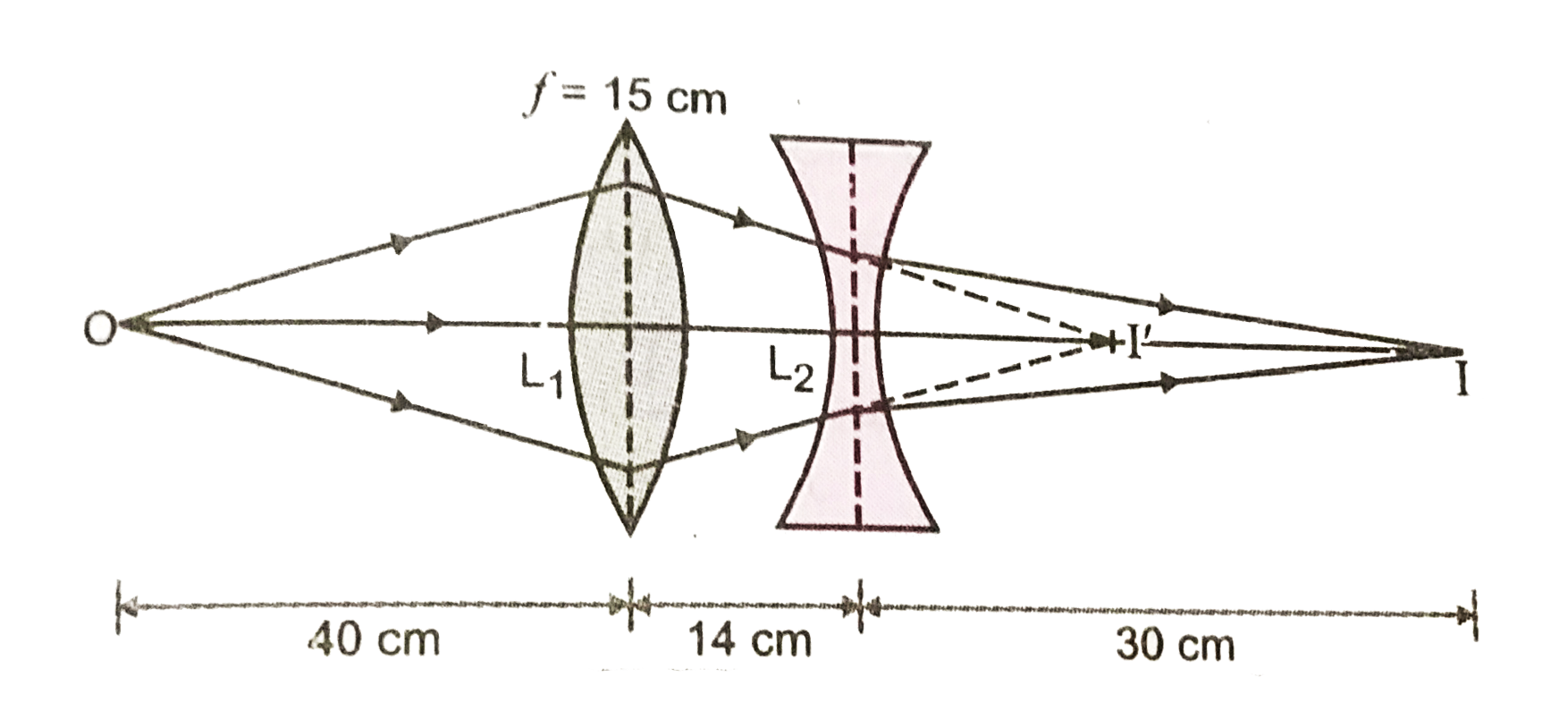Look at the ray diagram shown ,what will be th focal length of th e1stand the 2ndlens,if the incident light ray passes without any deviation?

The correct Answer is:C
From figure 1st behave as diverging and 2nd behave converging
In 1st incident ray appear to pass at 5 cm distance point and after refraction it becomes parallel to principal axis i.e. the focal length = -5cm and for second f=5 cm
Topper's Solved these Questions
- GEOMETRICAL OPTICSBOOK - ALLENCHAPTER - GEOMETRICAL OPTICSEXERCISE - EXERCISE-2
44 Videos
- GEOMETRICAL OPTICSBOOK - ALLENCHAPTER - GEOMETRICAL OPTICSEXERCISE - EXERCISE-3
12 Videos
- GEOMETRICAL OPTICSBOOK - ALLENCHAPTER - GEOMETRICAL OPTICSEXERCISE - EXERCISE - 05 (B) (ASSERTION & REASON )
9 Videos
- CURRENT ELECTRICITYBOOK - ALLENCHAPTER - CURRENT ELECTRICITYEXERCISE - All Questions
427 Videos
- GRAVITATIONBOOK - ALLENCHAPTER - GRAVITATIONEXERCISE - EXERCISE 4
9 Videos
Similar Questions
Knowledge Check
Name the part of a lens through which a ray of light passes without suffering any deviation.
Aoptical centreBfocusCcentre of curvatureDpole
Name the part of a lens through which a ray of light passes without suffering any deviation.
View SolutionUse the following ray diagram, Fig. to calculate focal length of lens L2.
 .
.
View SolutionThe rectangular box shown is the place of lens. By looking at the ray diagram, answer the following questions.
(i) If X is 5cm then what is the focal length of the lens ?
(ii) If the point O is 1 cm above the axis then what is the position of the image ? Consider the optical center of the lens to be the origin.

View SolutionUse the following ray diagram, Fig. 6(b).56 to calculate focal length of lens L2.

View SolutionThe ray of light is incident at an angle of 45∘ on a glass surface. What will be the critical angle of the glass when placed in air if the light ray is deviated by 12∘ ?
View SolutionIn which case does a light ray pass through the centre of a thin lens without deviation?
View SolutionAn equiconvex lens of refractive index μ1, focal length 'f' and radius of curvature 'R' is immersed in a liquid of refractive index μ2. For (i) μ2>μ1, and (ii) μ2<μ1, draw the ray diagrams in the two cases when a beam of light coming parallel to the principal axis is incident on the lens. Also find the focal length of the lens in terms of the original focal length and the refractive index of the glass of the lens and that of the medium.
View Solution

 .
.